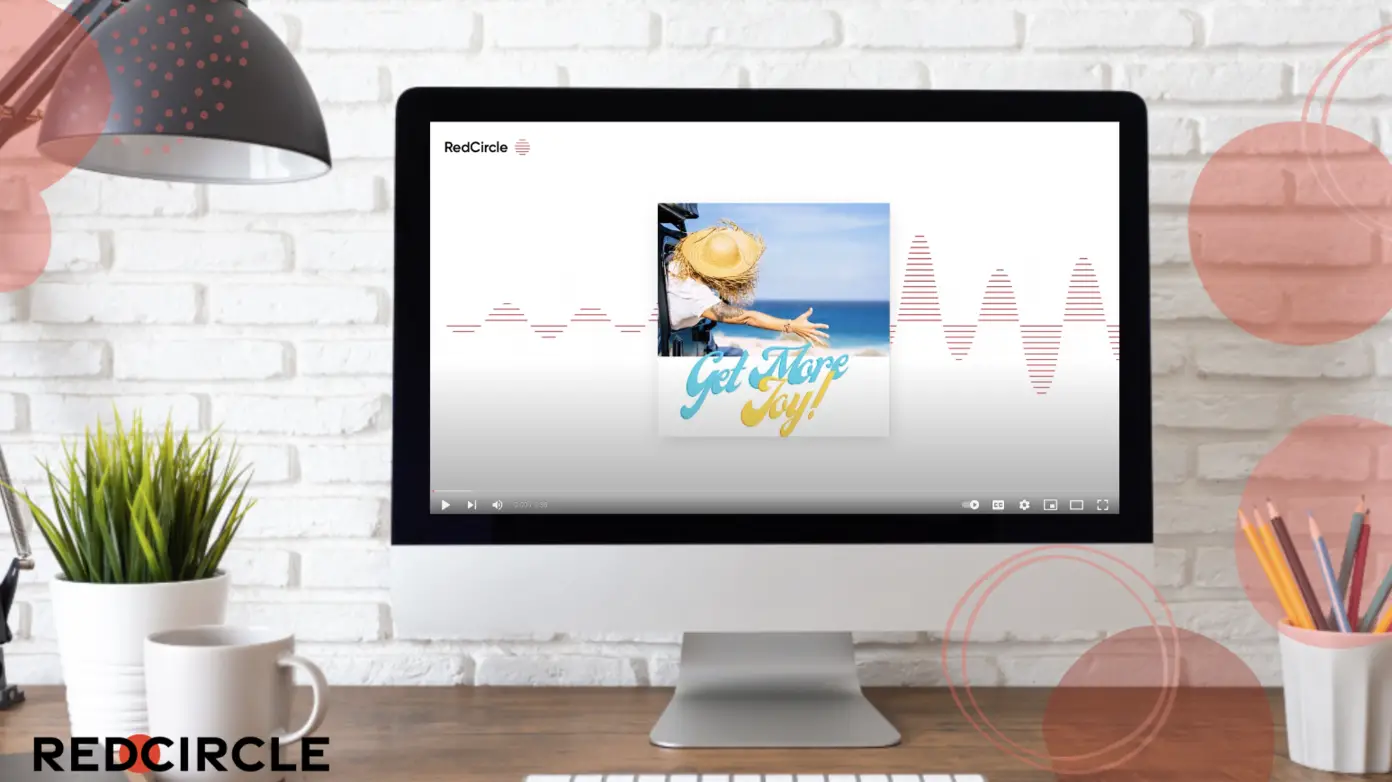Video podcasting has been trending in the past couple of years, and for good reason too! YouTube has become a major distribution channel for many podcasters as a wide variety of listeners can be found on the platform. For those new to podcasting, you’ve probably wondered if you should post your podcast to YouTube.
The short answer: Definitely! And RedCircle can help you do it.
Why You Should Post to YouTube
YouTube boasts an impressive audience in the billions. More and more listeners are finding their way over to the video platform to listen and engage with their favorite podcasts. In fact, it’s often the preferred method to tune in to shows. That’s why it’s an excellent way to extend your reach to a wider audience.
A great way to grow your podcast is to share it as widely as possible with as many people as you can. That’s why we recommend these top 5 places to distribute your podcast, along with platforms like YouTube. The more places you distribute, the better chance you have to find an audience.
How YouTube Handles RSS Feeds
YouTube has begun ingesting RSS Feeds from third-party hosting platforms. However, they’re not following the typical process that every other listening platform adheres to. Unlike every other listening platform which “reads” an RSS Feed and populates the information it finds, they instead re-host the content. This means that a podcast’s content is essentially copied over only once to YouTube. So, if an episode requires an update to its audio, description, etc., then the podcaster would need to also update that information on YouTube separately. This is much different when compared to every other listening platform where the information only needs to be updated on the hosting platform’s end in order for the new information to be published everywhere else.
Friction for the podcaster is already seen with this change in how YouTube interacts with RSS Feeds. The more concerning dilemma for most podcasters, though, is the exclusion of Programmatic ads from their shows. YouTube doesn’t allow for ads that compete with their own ad programs. Luckily Host-Read ads, which YouTube calls “paid promotions”, are still allowed on the platform. Even though podcasters can keep their original host-read ads, YouTube can still place their own ads on the videos. While they do split the revenue with creators, this does prevent podcasters from having dynamic Programmatic ads that only pay out to them.
YouTube is one of the world’s largest media platforms, so it does make sense to want to distribute your podcast there. The good news is that hosting platforms, like RedCircle, have been helping with this for years already!
How to Use RedCircle’s YouTube Integration
We use our own open authorization (Oauth) connection to YouTube to generate static-image videos of audio-only podcast episodes (much like YouTube is offering.) Additionally, Programmatic ads are kept out for you when generating and uploading the video on your behalf. And this is all done on one platform! You can create an episode and set it to be published on YouTube, along with all your other distribution channels, with a simple click.
See our Help article on publishing to YouTube for detailed steps.
It’s ultimately up to you, the podcaster, to decide how (and if) you want to share your podcast on YouTube. There’s definitely a benefit to sharing your show far and wide, and that’s why hosting platforms already distribute your show to every available directory. YouTube is a great discovery tool, but their RSS ingestion methods may be more trouble than they’re worth for podcasters. Especially since there are quite a few hosting platforms, like RedCircle, that already do it for you!



